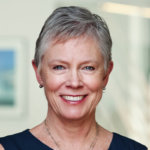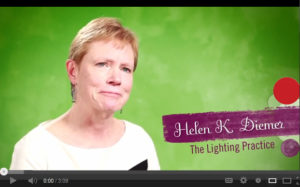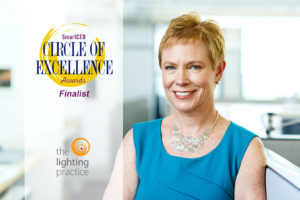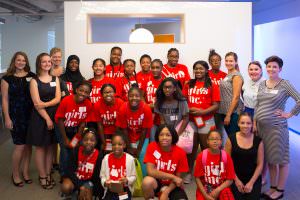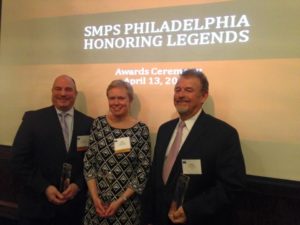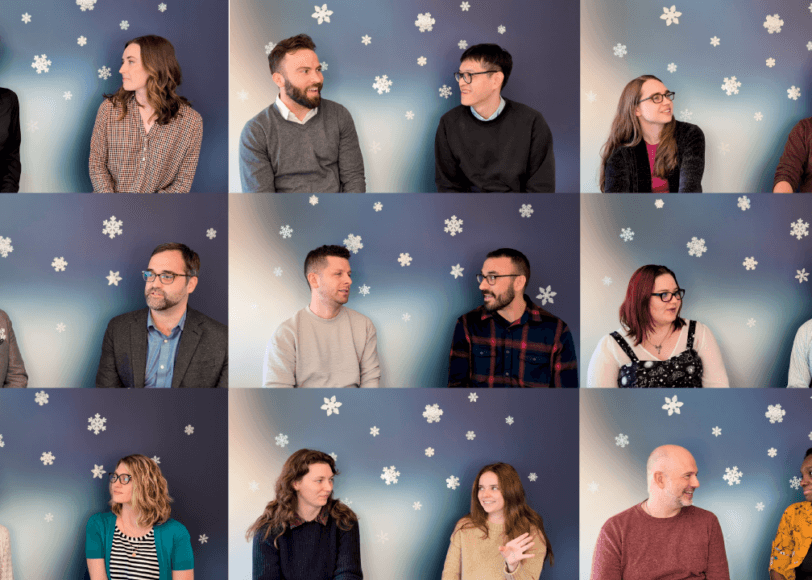“I give credit to my dad for always telling me I could be anything I wanted to be, to think big, and to not assume a certain role for myself because I’m a woman.”
Helen Diemer, President of The Lighting Practice, is a leader within the lighting industry and our community at large. In addition to her work as an award-winning lighting designer, she is a past-President and Fellow of the IALD and frequently participates in mentoring opportunities as well as charitable and speaking engagements. As an active member of the IES, Helen helped shape energy standards that have become the basis for today’s lighting energy codes.
In honor of International Women’s Day 2018, Helen answers a few questions about building her career, finding the right work/life balance, overcoming the challenges she met on the road to success, and leading The Lighting Practice.
You have been in lighting design since the 1980s. In what ways has the landscape of the industry changed for women over the past few decades?
Although I was a minority in engineering school in the 80s, it wasn’t by much. My class was made up of 25 to 30 percent women. But my first job out of school was at an engineering firm, and female designers were very much underrepresented. Women were typically administrative staff in that field. When I got into lighting design, it was different. There was a 50/50 mix of men and women, but few female leaders.
Over time, those numbers have continued to evolve. Lighting design as a profession now has a lot of women in it. Many of them are leaders. There are now quite a few women-owned lighting design firms in the U.S.
Was becoming president of a company always a goal of yours, or was TLP just the right fit?
I wanted to be a boss and a leader in a business. I give credit to my dad for always telling me I could be anything I wanted to be, to think big, and to not assume a certain role for myself because I’m a woman. So, I knew in the back of my mind that I had the potential to be a leader.
The Lighting Practice was a particularly good fit for me. I had leadership roles in previous jobs – I ran the lighting department at an engineering firm, and I was an associate at a lighting design firm in New York and had the opportunity to become an owner of that business. My personal circumstances changed, and I moved to Philadelphia and joined The Lighting Practice. It was a great opportunity for me. I saw the business Al had started, and I could see that TLP was a place where I could have a role in shaping the future of the firm. That was exciting to me.
Which key mentors or opportunities over the years helped you reach your goals and shape your success?
My parents were mentors to me; I give them credit for giving me some of my drive. My dad reminded me that I could be whatever I wanted to be. My mother’s contribution was demonstrating balance. She showed me the importance of collaborating with people and listening to other points of view. My mentorship started there.
Early in my career, I had a boss in Minneapolis who encouraged each of his employees to think about how they wanted to be an expert. He asked me what I wanted to excel at when I started there, and I said lighting. He told me to pursue it. I was an active member of the IES and IALD, but his support helped opened a door for me to be even more active in professional organizations. Having that opportunity at an early stage had a tremendous impact on me, and it led me to build my career.
What are the biggest struggles you have met in the industry?
There have been times during my career when I was one of few women or the only woman at the table. But that has generally not been a problem; in some circumstances, it was even beneficial. Standing out can be a good thing. Early in my career, I had some challenges with contractors who questioned whether I belonged at the table at all. Those issues taught me how to assert myself, to not take those feelings personally, and to not be intimidated.
Many professionals who are also parents feel pressure about their dedication to their job. How did you overcome the challenges you met while growing your family and your career at the same time?
I was pregnant with my son when I moved to Philadelphia and joined The Lighting Practice, and I was due in four or five months. I had already had my daughter and experienced working with a child, and I learned that working part-time was the way I could keep a hand in my career and have time with my kids. I started working three days a week at TLP, and Al was very supportive of that. I increased my schedule within the first year of my son’s birth. Within two years, I was full time again. That’s how I personally maintained a balance when my kids were very little.
A major component of being able to manage work and children was having a supportive partner. My husband is in a similar business and shared the responsibilities involving the kids. So, I had a partnership at home and an understanding work environment. Each parent has to create his or her own balance and find what works. For me, it was important to keep my career. I did dial back my involvement in professional organizations like the IALD after my daughter was born. Something had to give. Reevaluating my priorities allowed me to manage my career and home life together.
How does The Lighting Practice provide equal opportunities for men and women?
TLP enables all our employees to be as successful as they can be, to rise through the ranks and achieve the level they are interested in and capable of. Part of those efforts involves enabling our people to maintain a successful career while they are raising children. We have put in place specific programs to help parents maintain a work/life balance if they want to grow their families.
We’re proud to have all the talented women we have at the firm, and we’re proud of our talented men. Right now, we have about a 50/50 split of men and women, but it varies from year to year. At TLP, we aim to create a place where people can succeed in a career and a personal life.
What does it mean to be a certified Women-owned Business?
To be a “women-owned business,” a company needs to have a female majority shareholder, meaning 51 percent minimum women’s ownership.
Being WBE certified has created some opportunities that we might not otherwise have found. It exposed us to new firms and has given us more opportunities in marketplaces like transportation, streetscape, and federally-funded projects. The greatest benefit has been with existing clients who see our WBE certification as an enhancement when they are working on projects that include public money – such as healthcare and education projects where there are mandates and/or project goals to include a certain percentage of historically disadvantaged businesses, such as MBE, WBE and DBE.
Helen is an inspiring leader for all of us at The Lighting Practice and the community at large.
